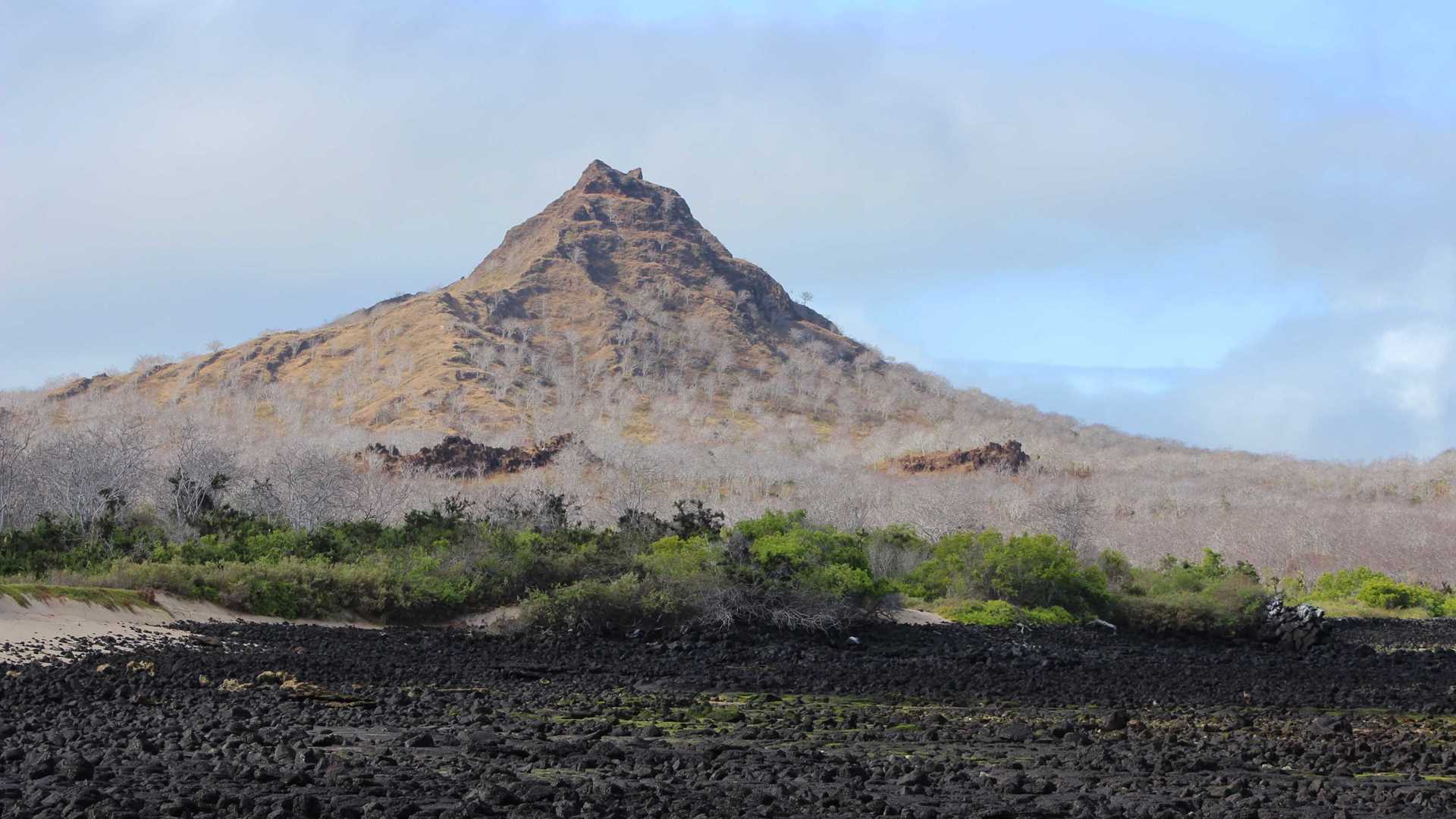At sunrise, a clear sky greeted us next to Santa Cruz Island. We started our morning visiting the western side of the island, one of the oldest in Galapagos. The exploration began on a rocky shore, where the low tide created several pools that were full of life. Right by the shore, we saw marine iguanas eating algae straight from the rocks and sea turtles resting in the shallow waters.
The trail then took us inland, passing by several brackish ponds and an opuntia cactus forest. Finally, we arrived at the nesting site of the land iguanas, where burrows had been dug both for nesting and hiding from the heat. Immediately we found land iguanas in the middle of the trail. Most were still sun basking on the cleared areas formed by the trails, and others had started making their way into the bush as they had reached the body temperature they needed for their activities. As the dry season continues, the forest has almost no food for land animals but for the few leaves of endemic species and a couple of flowers from the opuntia cactus. We found one iguana climbing up a thin bush to get to the leaves.
The morning ended with a spectacular snorkel near Guy Fawkes islets. In the afternoon, we visited a sheltered mangrove area called Borrero Bay. Here some groups went kayaking as the rest of us explored the area on Zodiacs. We got very close to the mangroves, and we could see nesting pelicans and herons, as well as the baby sharks. The day ended with a beautiful sunset, which we enjoyed while the National Geographic Endeavour II circumnavigated Daphne Major islet.







